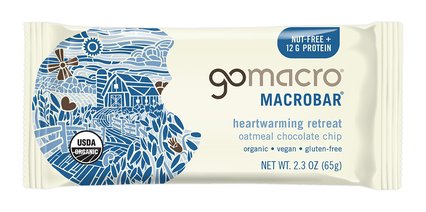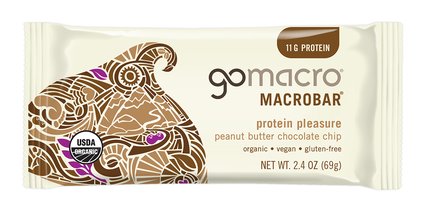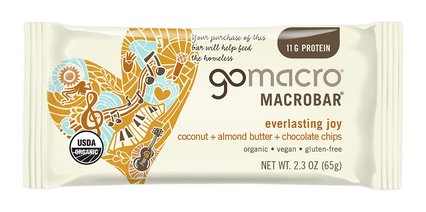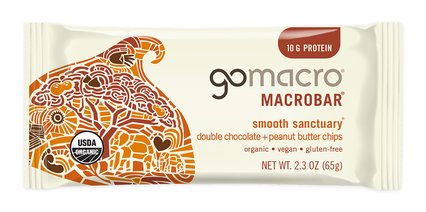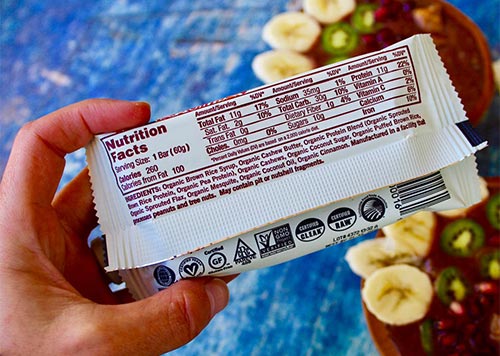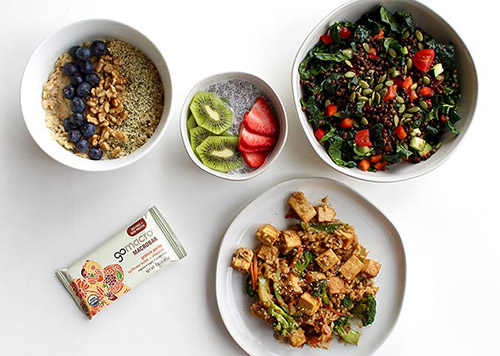How to Start a Gluten and Dairy-Free Diet
Transitioning to a gluten and dairy-free diet can feel like an intimidating leap to make – but it doesn't have to be. In fact, the majority of whole foods are naturally gluten and dairy-free, and new gluten and dairy-free food options in grocery stores are making it easier to find compliant foods than ever before. By focusing on all the foods you can still eat, learning how to read a nutrition facts label, understanding hidden ingredients, and finding gluten and dairy-free substitutes for some of your favorites, you can build a diet that suits your dietary needs without sacrificing delicious food.
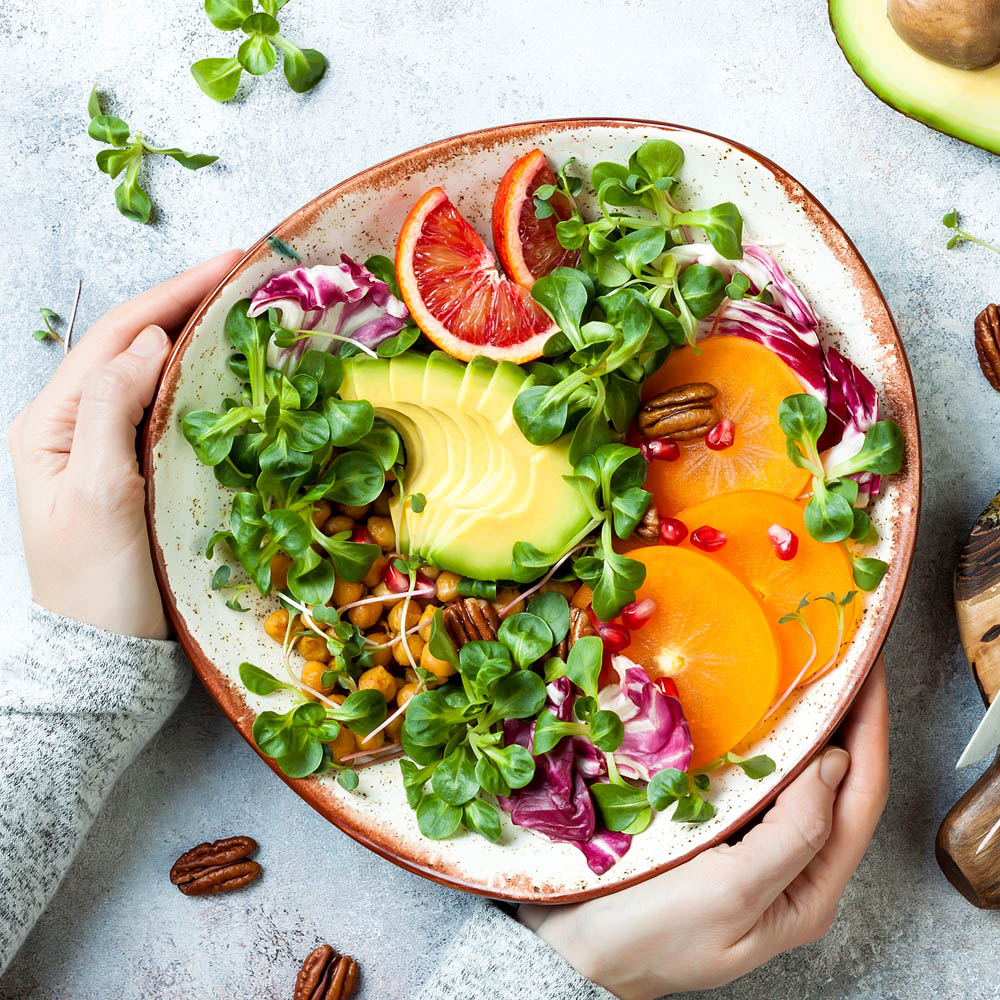
What is a Gluten and Dairy-Free Diet?
A non-dairy, gluten-free diet is fairly self-explanatory; avoid dairy or dairy-derived products and avoid foods containing gluten. Some people must follow a gluten-free, dairy-free diet due to food allergies or sensitivities, while others find that this diet relieves digestive issues or helps them feel more energized. A typical American diet has historically included many dairy and gluten products, but there are still plenty of delicious food options available that are free of these ingredients. Besides whole foods like fruits, veggies, nuts, and non-wheat grains, nearly every grocery store now carries a variety of gluten-free and dairy-free alternatives to your favorite foods. Your reasons for starting a non-dairy, gluten-free diet might affect how you approach grocery shopping. For example, if you have severe allergies or intolerances, then avoiding potential cross-contamination will be much more urgent for you than for someone electing to ditch gluten and dairy for lifestyle reasons. No matter the circumstances, there are still plenty of foods to enjoy on a gluten and dairy-free diet.
What Foods are Gluten and Dairy-Free?
1. Fruits and Vegetables
Virtually all fruits and vegetables are gluten and dairy-free, which allows for lots of variety in nutrients and flavors in your diet. Fresh fruits like berries, apples, bananas, peaches, citrus fruits, and more are all fair game, as are fresh vegetables like leafy greens, broccoli, asparagus, carrots, bell peppers, potatoes, and many others. If you're purchasing frozen, pre-chopped, or canned fruits and veggies, take a different look at the food label as they might be processed in a facility that processes gluten or dairy products.
2. Whole Grains
Just because you can't have gluten or wheat doesn't mean all grains are out of bounds. Rice, quinoa, amaranth, millet, corn, buckwheat, corn, and sorghum are all dairy and gluten-free grains. When purchasing oats, be sure to look for a gluten-free variety to ensure they haven't been cross-contaminated with wheat during processing.
3. Nuts and Seeds
Nuts and seeds are inherently gluten-free and dairy-free, making them a convenient source of healthy fats and plant-based protein. Nuts like almonds, pecans, macadamia nuts, cashews, pistachios, and seeds like flax, chia, sesame seeds, and sunflower seeds are all packed with micronutrients and minerals your body needs for optimal function. The only caveat: many flavored or covered nuts and seeds contain dairy and gluten in their seasoning blends, and some are processed on shared equipment with gluten and dairy. If you're looking for flavored nuts and seeds, the safest bet is to choose a variety that's certified gluten-free.
4. Beans and Legumes
If you're looking for ways to add satisfying protein, fiber, and carbs into a gluten-free and dairy-free diet, look no further than beans and legumes! Black beans, white beans, kidney beans, chickpeas, and lentils are all affordable, easily found in most grocery stores, and a great way to bulk up a plant-based meal. While all beans and legumes are inherently gluten-free and dairy-free, it's smart to double-check the ingredients when buying canned beans to ensure no extra starches have been added.
5. Certain Proteins
While many protein options contain dairy, there are even more that don't! Beans, legumes, tofu, most types of tempeh, most plant-based protein powders, and some plant-based protein bars are free of dairy and gluten. Many meat and dairy substitutes, such as plant-based burgers (Amy's, Dr. Praeger's, Beyond, etc.), coconut yogurt, nut milks, and dairy-free cheeses, are options for replacing some of your dairy and gluten-filled favorites.
6. Plant-Based Oils & Spices
Skipping out on gluten and dairy doesn't mean skimping on flavor. Plant-based oils like avocado oil, coconut oil, and sesame oil are good frying and sauté options as they have a high smoke point, while oils like olive oil and flaxseed oil are great for drizzling or dressings. Similarly, most spices are inherently gluten-free and dairy-free - but one study found that 24% of spices tested contained gluten. However, in the amounts an average person would consume in a meal, the gluten levels found would not typically be harmful. Use caution when choosing spice blends; some contain whey products.
Tips for Starting a Gluten and Dairy-Free Diet
Removing gluten and dairy from your diet can feel overwhelming, but there have never been more dairy-free and gluten-free options available in the grocery store. Here are a few tips to help you ease into the process.
- Take inventory of your pantry and refrigerator foods and purge anything with gluten and dairy to give yourself a clean slate. Pay special attention to any processed foods' labels to ensure there aren't any hidden gluten or dairy ingredients.
- Educate yourself on ingredients you need to avoid (such as whey, caseinate, malt, and brewer's yeast) so you don't inadvertently eat something you're trying to avoid.
- Remember, there are way more foods you can eat than foods you can't, so focus on building your diet around real, whole foods that are nutrient-dense and easy to mix and match.
- For any packaged or processed foods, look for the certified gluten-free symbol to avoid gluten and the certified vegan or Pareve symbols to avoid dairy products. Anything that's labeled "Whole30 compliant" is also gluten and dairy-free. These are a great "shortcut," so you don't have to read the whole label, and you can rest assured they haven't been cross-contaminated. When eating out, let your server know you can't have gluten or dairy to ensure they don't serve any sauces or seasonings with hidden gluten or dairy ingredients.
The Bottom Line
Whether you're eliminating gluten and dairy from your diet due to food sensitivities, allergies, or digestive issues, it can feel like a big sacrifice to make the switch. However, there are still lots of tasty and nutritious foods available that are naturally gluten and dairy-free, as well as many new packaged foods and substitutes for your favorites.
As you learn more about going gluten and dairy-free, you'll discover your way around food labels and how to swap out ingredients as needed. Who knows, you might even find new favorites that you wouldn't have considered before!
If you're looking for a delicious gluten-free, dairy-free snack, GoMacro MacroBars are certified vegan and gluten-free. With mouthwatering flavors like Double Chocolate + Peanut Butter Chips and Coconut + Almond Butter + Chocolate Chips, there's something for every craving – and you can rest assured they suit your dietary needs.
